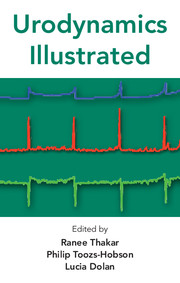
- Cited by 4
-
Cited byCrossref Citations
This Book has been cited by the following publications. This list is generated based on data provided by Crossref.
2015. Clinical Gynecology. p. 399.
Toozs-Hobson, Philip M. and Israfilbayli, Fidan 2015. Clinical Gynecology. p. 451.
Chester, Jonathan Toozs-Hobson, Philip and Israfil-Bayli, Fidan 2016. The role of ambulatory urodynamics in investigation of female urinary incontinence. International Urogynecology Journal, Vol. 27, Issue. 3, p. 381.
Taithongchai, Annika Sultan, Abdul H and Thakar, Ranee 2019. A guide to indications, components and interpretation of urodynamic investigations. The Obstetrician & Gynaecologist, Vol. 21, Issue. 3, p. 193.
- Publisher:
- Cambridge University Press
- Online publication date:
- February 2014
- Print publication year:
- 2011
- Online ISBN:
- 9781107784727


